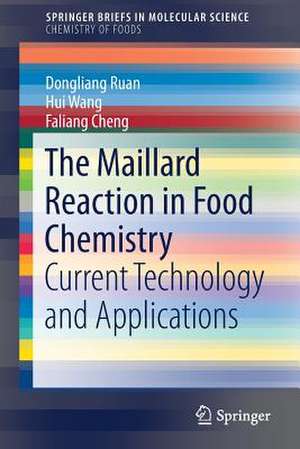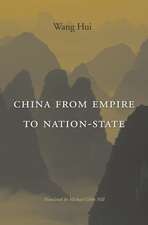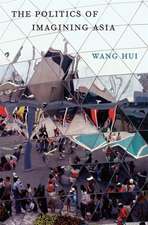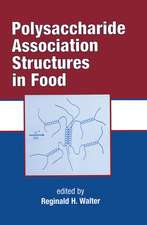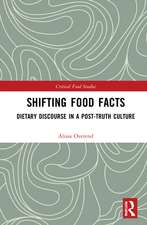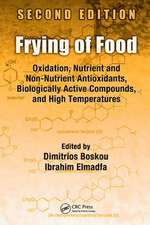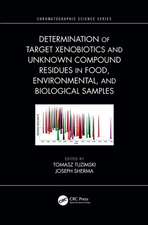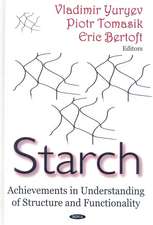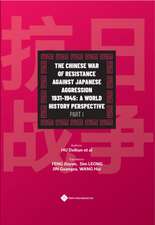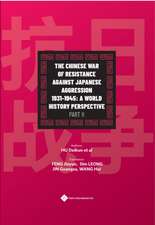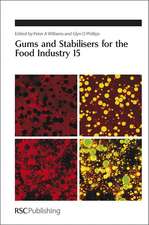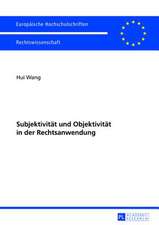The Maillard Reaction in Food Chemistry: Current Technology and Applications: SpringerBriefs in Molecular Science
Autor Dongliang Ruan, Hui Wang, Faliang Chengen Limba Engleză Paperback – 6 dec 2018
Din seria SpringerBriefs in Molecular Science
-
 Preț: 411.46 lei
Preț: 411.46 lei -
 Preț: 379.09 lei
Preț: 379.09 lei -
 Preț: 356.49 lei
Preț: 356.49 lei -
 Preț: 441.25 lei
Preț: 441.25 lei -
 Preț: 389.70 lei
Preț: 389.70 lei -
 Preț: 376.22 lei
Preț: 376.22 lei -
 Preț: 348.77 lei
Preț: 348.77 lei -
 Preț: 345.14 lei
Preț: 345.14 lei -
 Preț: 347.68 lei
Preț: 347.68 lei -
 Preț: 346.70 lei
Preț: 346.70 lei -
 Preț: 376.43 lei
Preț: 376.43 lei -
 Preț: 342.14 lei
Preț: 342.14 lei -
 Preț: 375.23 lei
Preț: 375.23 lei -
 Preț: 375.23 lei
Preț: 375.23 lei -
 Preț: 379.09 lei
Preț: 379.09 lei -
 Preț: 376.59 lei
Preț: 376.59 lei - 15%
 Preț: 461.73 lei
Preț: 461.73 lei -
 Preț: 378.12 lei
Preț: 378.12 lei -
 Preț: 376.59 lei
Preț: 376.59 lei -
 Preț: 376.59 lei
Preț: 376.59 lei -
 Preț: 375.23 lei
Preț: 375.23 lei -
 Preț: 351.18 lei
Preț: 351.18 lei -
 Preț: 377.73 lei
Preț: 377.73 lei -
 Preț: 372.73 lei
Preț: 372.73 lei -
 Preț: 378.54 lei
Preț: 378.54 lei -
 Preț: 376.96 lei
Preț: 376.96 lei -
 Preț: 377.35 lei
Preț: 377.35 lei -
 Preț: 378.12 lei
Preț: 378.12 lei -
 Preț: 376.04 lei
Preț: 376.04 lei -
 Preț: 346.59 lei
Preț: 346.59 lei -
 Preț: 375.45 lei
Preț: 375.45 lei -
 Preț: 377.73 lei
Preț: 377.73 lei -
 Preț: 381.00 lei
Preț: 381.00 lei -
 Preț: 377.18 lei
Preț: 377.18 lei -
 Preț: 376.96 lei
Preț: 376.96 lei -
 Preț: 380.07 lei
Preț: 380.07 lei -
 Preț: 376.22 lei
Preț: 376.22 lei -
 Preț: 343.72 lei
Preț: 343.72 lei -
 Preț: 376.22 lei
Preț: 376.22 lei -
 Preț: 377.35 lei
Preț: 377.35 lei -
 Preț: 343.72 lei
Preț: 343.72 lei -
 Preț: 376.22 lei
Preț: 376.22 lei -
 Preț: 375.07 lei
Preț: 375.07 lei -
 Preț: 374.85 lei
Preț: 374.85 lei - 15%
 Preț: 464.97 lei
Preț: 464.97 lei -
 Preț: 376.43 lei
Preț: 376.43 lei -
 Preț: 341.75 lei
Preț: 341.75 lei -
 Preț: 374.30 lei
Preț: 374.30 lei -
 Preț: 375.23 lei
Preț: 375.23 lei -
 Preț: 377.57 lei
Preț: 377.57 lei
Preț: 443.75 lei
Nou
Puncte Express: 666
Preț estimativ în valută:
84.91€ • 88.65$ • 70.27£
84.91€ • 88.65$ • 70.27£
Carte tipărită la comandă
Livrare economică 05-19 aprilie
Preluare comenzi: 021 569.72.76
Specificații
ISBN-13: 9783030047764
ISBN-10: 3030047768
Pagini: 131
Ilustrații: XXIII, 84 p.
Dimensiuni: 155 x 235 mm
Greutate: 0.16 kg
Ediția:1st ed. 2018
Editura: Springer International Publishing
Colecția Springer
Seriile SpringerBriefs in Molecular Science, Chemistry of Foods
Locul publicării:Cham, Switzerland
ISBN-10: 3030047768
Pagini: 131
Ilustrații: XXIII, 84 p.
Dimensiuni: 155 x 235 mm
Greutate: 0.16 kg
Ediția:1st ed. 2018
Editura: Springer International Publishing
Colecția Springer
Seriile SpringerBriefs in Molecular Science, Chemistry of Foods
Locul publicării:Cham, Switzerland
Cuprins
The Maillard Reaction.- Characterization of the Maillard Reaction on Amino Acid-Sugar Systems.- Characterization Of Glycated Lysine In Peptide-Sugar System.- Determination of the Maillard Reaction Sites and Property Effects of Lysozyme.
Notă biografică
Dr. Dongliang Ruan obtained his Ph.D in the Department of Chemistry and School of Biological Science, University of Hong Kong and is an Associate Professor in the School of Environment and Civil Engineering, Dongguan University. His research fields are focused on modern technology in food, environmental and biological studies, especially in developing novel analytical methods. He has been awarded by the Natural Sciences and Engineering Research Council (NSERC) of Canada, for developing a modern and novel methodology of mass spectrometry for food analysis.
Dr. Hui Wang obtained her Ph.D in the Department of Chemistry, University of Hong Kong and currently is a microbiologist in Agriculture Agri-Food Canada, Canadian Federal Research Centre. She is an expert in food microbiology and food quality control, especially in beef, pork and chicken. She was awarded the full fellowship from Natural Sciences and Engineering Research Council (NSERC) of Canada, for developing a methodology of meat quality control. She has experience in food quality control and inspection in manufactures and provides solutions for food, especially meat processing industries.
Professor Faliang Cheng obtained his Ph.D in the School of Chemistry and Chemical Engineering, Sun Yat-sen University and currently is a Professor of School of the Environment and Civil Engineering, Dongguan University of Technology. His research interests cover nanomaterials, biosensors and bio-fuel cells. He is also the Director of the Guangdong Engineering and Technology Research Center for Advanced Nanomaterials and Director of the Scientific Research Division, Dongguan University of Technology. He has been entitled as a “Top Ten Outstanding Youths in Dongguan”, “Leader of Dongguan Science and Technology” and “Dongguan Talent Scientist”.
Textul de pe ultima copertă
This book is devoted to the characterization of Maillard reaction products using mass spectrometry (MS)-based technologies. The Maillard reaction is a well-known non-enzymatic reaction between reducing sugars and proteins, and one of the most important reactions in food sciences. The authors explore different MS-based technologies to systematically investigate the Maillard reaction from amino acids, peptides and proteins. By using amino acid/peptide-sugar models, the authors also show how reactants, temperature and time affect the Maillard reaction. In this book, readers will learn more about glucosylation, and how it can improve functional properties of food proteins.
Caracteristici
Explores mass spectrometry-based technologies to study Maillard reaction products Presents a systematic model to investigate the Maillard reaction from amino acids, peptides and proteins Broadens the understanding of the Maillard reaction in food processing
